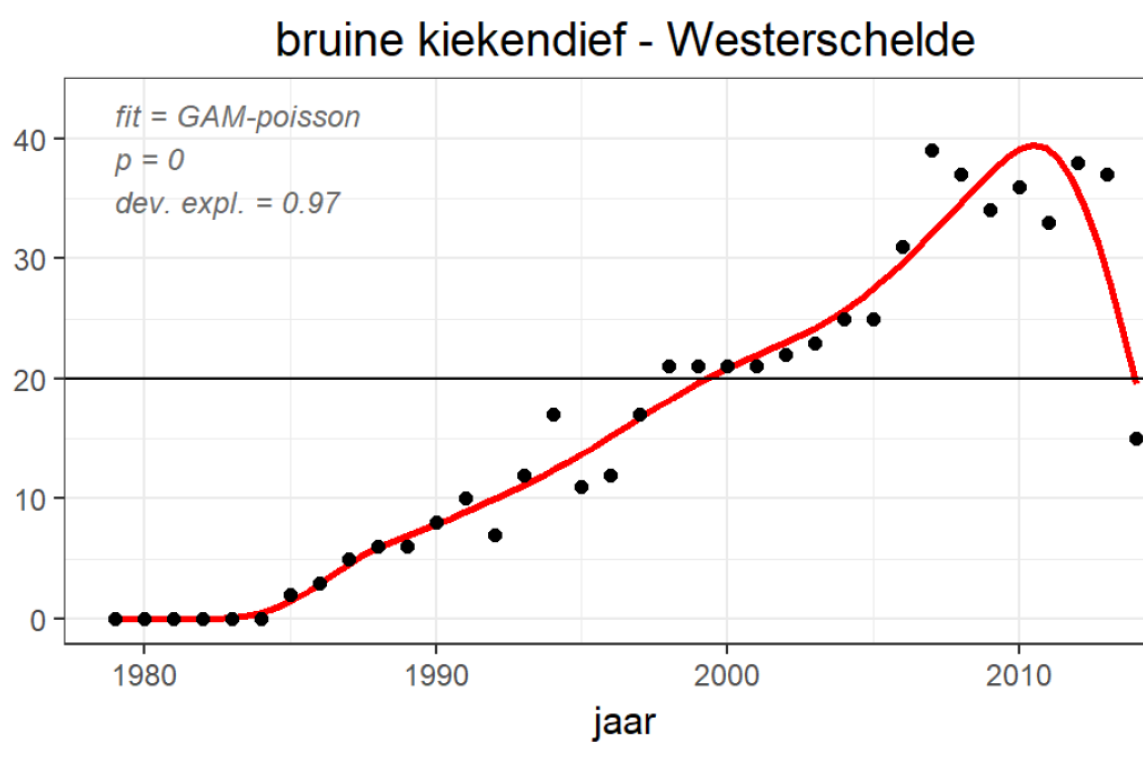Species diversity
The number of animal, plant, microorganism, … species present within an ecosystem can vary greatly. Biodiversity is a measure of genetic, species and ecosystem diversity. Species richness is increasingly used as an indicator of the condition of an ecosystem. The quality and quantity of the habitat strongly determine the presence and abundance of the species, see also ‘Habitat diversity’. Additionally, different species fulfil different roles within an ecosystem, making them often indispensable for the functioning of the ecosystem. In many cases, an ecosystem with a greater species diversity is more resistant to disturbances. Therefore, it is essential to monitor the biodiversity as well as the occurrence of different core and invasive species in the Scheldt estuary. This was included in the section ‘Nature’ of VNSC’s ‘agenda voor de toekomst’.
Due to the uniqueness of a transition of fresh to salt water with tidal effects, an estuary such as the Scheldt estuary offers a suitable habitat for various internationally protected and ecologically and economically valuable species. In this way, the common shelduck (Tadorna tadorna) is often present in large numbers (internationally protected by the Birds Directive), and the diverse benthic organisms living there are an essential food source (ecologically valuable) for fish and birds. Furthermore, larvae of economically important species such as the common shrimp (Crangon crangon) and common sole (Solea solea) can develop in brackish parts of the estuary.

Data
To Toolbox
Products
To GalleryMaps
To Geoviewer